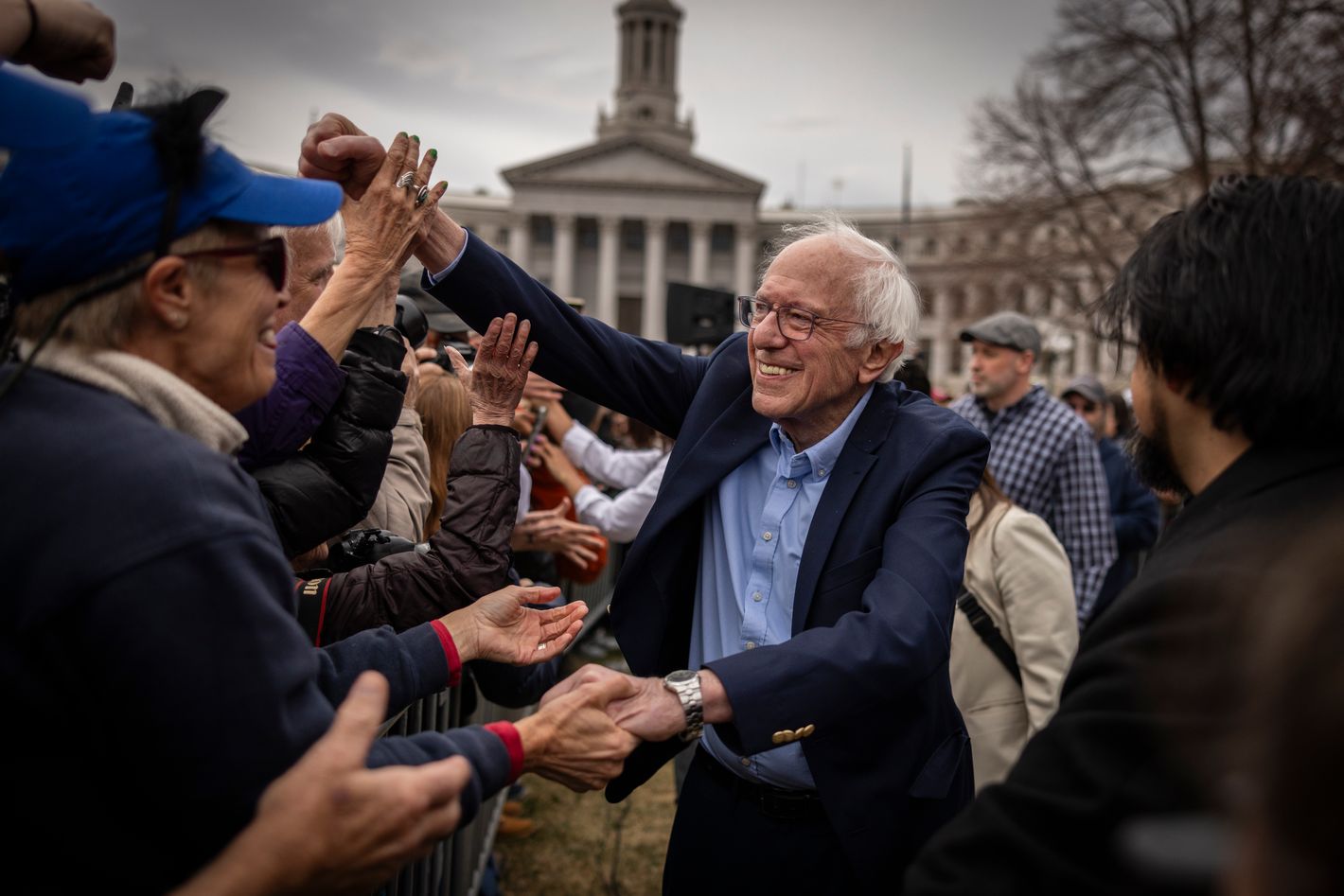Photo: Chet Strange/Getty Images
The Democratic Party’s biggest current star is an 83-year-old who has never technically belonged to it. Bernie Sanders continues to barnstorm across America, drawing tens of thousands of people at every destination, all of whom are desperate to combat Donald Trump, or at least hear from a politician who vocalizes their fury. The “resistance,” certainly, is not as pervasive or culturally widespread as it was eight years ago — the era of so-called hyperpolitics is mostly done — but it’s bubbling up where politicians are showing any kind of fight. Sanders plainly is, and Democrats of all ideological stripes seem appreciative of the democratic-socialist senator from Vermont. Of late, Alexandria Ocasio-Cortez has joined him on the road, and there’s renewed chatter that the 35-year-old member of Congress could run for president in 2028.
Sanders, unlike the rest of the Democrats, has never struggled over formulating a coherent political message. He has beliefs and he acts on them. And he understands the outrage many ordinary Americans feel about Elon Musk, the world’s richest man, laying waste to the federal bureaucracy. Hence the tour’s crisp theme: oligarchy. Sanders has railed against income inequality and the influence of the ultrawealthy on American life for at least a half-century. His prominence now illustrates the power of a consistent, easily digestible message, and puts him in stark relief with the mainstream of his party, which conspicuously lacks one.
The overriding question is what comes next. Neither Sanders or the rest of the Democrats have a great answer. Next year’s midterm elections should be favorable to them: Trump is increasingly unpopular, Americans are weary of DOGE and fearing a recession, and it’s easy to imagine the fragile GOP majority in the House disappearing altogether. The Senate races are much tougher, given the growing share of rural states that vote Republican, but there’s some hope there. At least two Republican-held states, Maine and North Carolina, could be flippable.
But for now, Democrats must wait. The rallies do offer catharsis, and it’s hard for progressives to demand much more from Sanders since he has accomplished so much for the American left over the last decade. But those looking to build durable power in a post-Sanders world must wonder where this is all headed. The organization Sanders founded to bolster progressives across America, Our Revolution, has had a minimal impact on the political scene. The left-wing group does little beyond doling out endorsements and cash to favored candidates.
A recent email from Our Revolution did seem to recognize that Sanders’s enormous rallies are potential organizing opportunities, promising to mobilize “communities to challenge Trump’s regressive policies and demand that the Democratic Party embrace bold economic populism.” The email boasted of “more than 9,000 members” of Our Revolution — a minuscule number, especially for an organization that was formed in 2016 to be the political arm that drove Sanders’s movement beyond his presidential campaigns. For context, the Democratic Socialists of America — which Sanders does not formally belong to — still claim close to 80,000 dues-paying members with active chapters across America. Notably, DSA is playing a central role in the rise of its New York City mayoral candidate, Zohran Mamdani, but Our Revolution is nowhere to be found. It’s far from becoming a major player in the Democratic Party, much less dominating it.
That Our Revolution is tangibly weaker than DSA may be an indictment of Sanders, but it’s not as if center-left, Sanders-hating Democrats can feel much schadenfreude. The disaster of 2024 is one they must own. They tamped down any hopes of an open primary and pretended, until the very end, that Joe Biden was fit to run again. They didn’t mind that Kamala Harris had no overarching campaign message, no compelling argument for the next four years.
These sorts of Democrats should wonder why it isn’t Harris headlining massive anti-Trump rallies. The former vice-president is thought to be mulling running again in 2028. For Democrats, it would be ideal if they just moved on — there are plenty of fresh faces and more intriguing options — but the rank and file probably wouldn’t mind seeing their last standard-bearer battle Trump in public. Barack Obama isn’t anywhere to be found, either. (Few sentient adults want Biden near a political rally.) Absent leaders, Sanders has emerged as one. Were he ten years younger, he might have another presidential campaign in him. Now that he’s in what could be his last Senate term, other Democrats must learn from his example and try, at least, to inspire people. It starts with having convictions and acting on them.

